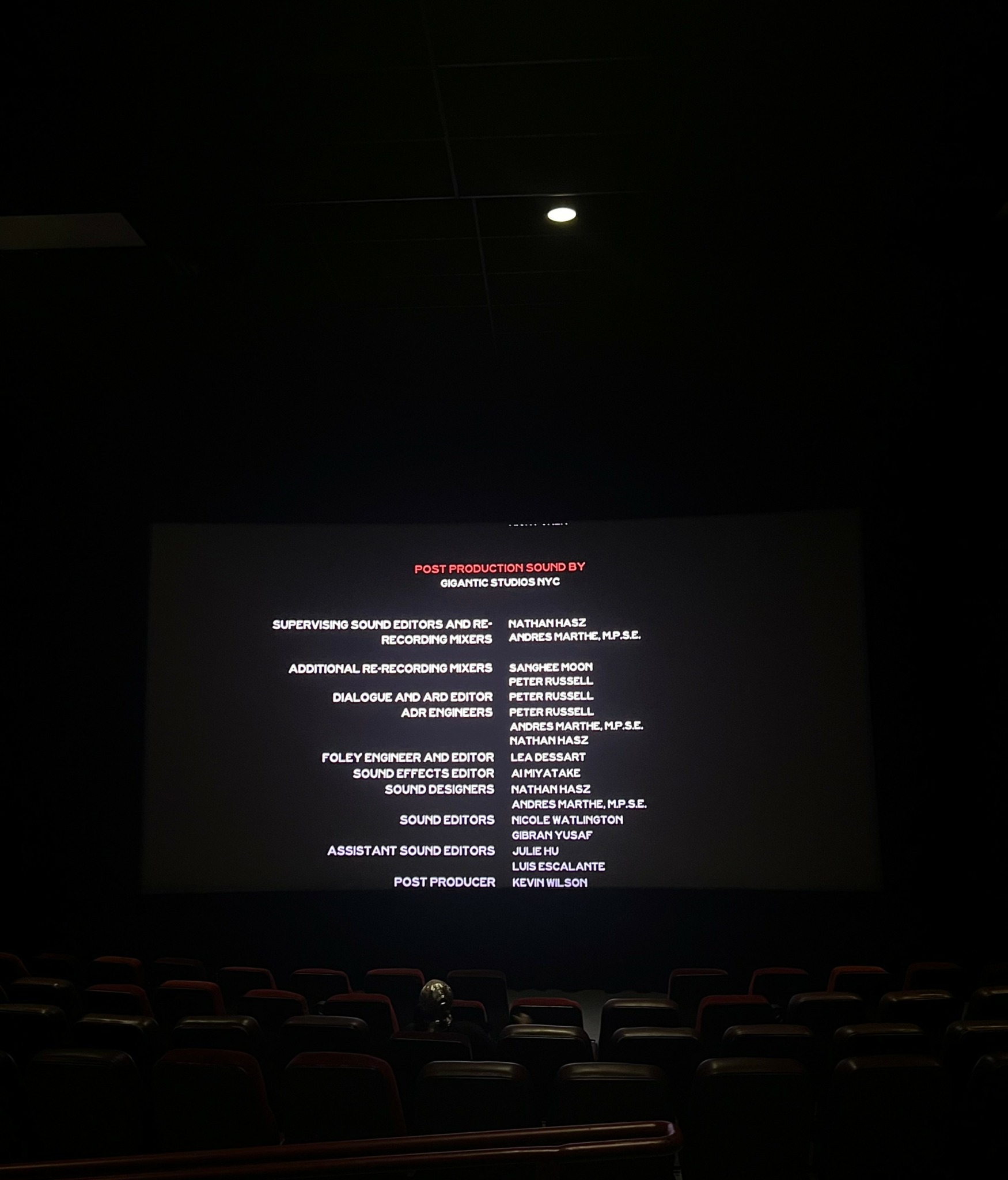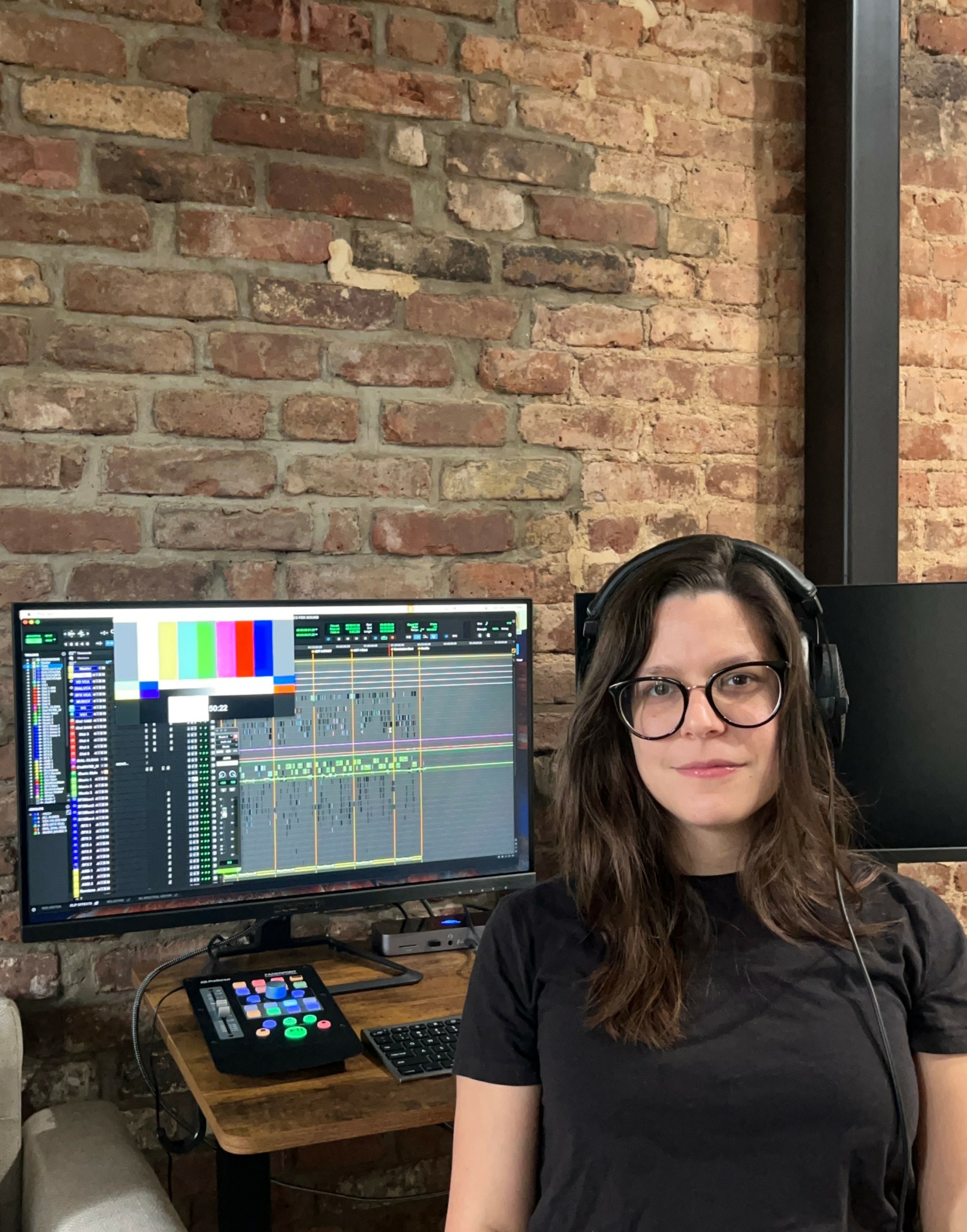We were lucky to catch up with Nicole A. Watlington recently and have shared our conversation below.
Hi Nicole A., thanks for joining us today. Some of the most interesting parts of our journey emerge from areas where we believe something that most people in our industry do not – do you have something like that?
There’s no wrong way to build a career and grow within the audio post-production industry. I’ve met many old-school purists who are very hierarchical and firmly believe that you need to climb the ladder strictly step by step—going from runner to assistant or transfer then to junior sound editor, and so on. And while that path may be ideal, not everyone has the opportunity to build a career the traditional way. Many BIPOC, women, and folks from disadvantaged economic backgrounds, particularly in and from the global south, put in the work day and night yet still struggle to find people who can open those learning experiences doors for them, especially when they migrate looking for better opportunities.
Unfortunately, I’ve been in uncomfortable conversations where people’s years of experience and talent were questioned by blanket assumptions simply because their work history didn’t follow the traditional structure. I’ve also been in conversations where it has been expressed that the audio post industry lacks and has always lacked women because they weren’t interested in the field until now. That is simply not true.
I believe that having this kind of old-school mindset can be harmful to minorities and exclude folks who may not have access to these conventional growth opportunities. Many have had to find alternative ways to create those opportunities for themselves. Everyone’s ladder is different. I know incredible engineers who went from interns straight to sound designers, and I also know award-nominated re-recording mixers who have freelanced since day one because freelancing was the only option available to them when they were starting out. That doesn’t make them any less talented. We’re all trying to stay afloat in this volatile industry.

Nicole A., love having you share your insights with us. Before we ask you more questions, maybe you can take a moment to introduce yourself to our readers who might have missed our earlier conversations?
I’m a film and TV sound editor and sound designer, born and raised in Puerto Rico and now based in New York City. How I got into this industry is quite a journey! I grew up surrounded by the arts—writing, attending an extracurricular Fine Arts school for music theory and performance, and analyzing films for fun—so pursuing a BS in Recording Arts in college felt natural at the time. Initially, I aimed for a career in the music industry. However, halfway through the program, I took an Audio Post-Production class—without knowing a thing about sound for film—that completely blew my mind. All it took was one 9 a.m. Monday lecture to redirect my creative pursuits entirely. From that moment, I lived and breathed getting professional experience and planning my entry into the audio post industry. I spent time meeting with professors in the university’s dubbing stage, contributing to student projects, and studying the craft of masters like Randy Thom and Mark Mangini, glued to websites like SoundWorks Collection.
After graduating in 2016, I moved to NYC to further expand my education and vocabulary in the film industry, where I earned a BA in Film Studies at The New School while working part-time as a TA for a Pro Tools course in the Journalism department. Freelancing wasn’t on my radar until a friend introduced me to a group of NYU film students who were constantly looking for people to edit and mix sound for their short films. From there, I saw it as an opportunity to gain real-world experience and began non-stop networking, offering my services to these student filmmakers and, later on, to independent directors and production companies. This helped kick-start my freelance career and eventually led to an internship at Gigantic Studios. That experience—being around the mix stages, witnessing how everything is prepped, and shadowing award-winning sound editors and re-recording mixers (and later collaborating with them as a freelancer)—gave me invaluable hands-on training and opened doors to further opportunities and connections.
I also spent a gap year in Spain post-COVID, where I earned an MA in Contemporary Film and Audiovisual Studies. My thesis focused on the psychology of sound through the lens of R. Murray Schafer and Michel Chion’s writings, deepening my understanding of the power and story behind each sound. This academic foundation now directly supports my creative and technical approach to sound design, turning every project from a “blank canvas” full of possibilities to a fully painted picture.
Over the years, I’ve worked alongside top-tier studios in New York and San Juan, Puerto Rico, and collaborated with many talented sound engineers around the globe. My work has screened at festivals worldwide and streamed on platforms like MAX, Hulu, Apple TV+, and Amazon Prime Video. I specialize in crafting immersive soundscapes that elevate storytelling, solving complex technical challenges, and delivering sonic experiences that resonate emotionally with audiences. I’ve developed the ability to merge technical expertise with a creative, theory-driven approach and an understanding of all the other processes and languages that make up a film. Each project has its own unique sonic identity, and I always strive to create a bespoke experience that supports and completes each story.

Where do you think you get most of your clients from?
I’d say networking. Building relationships is very important in this industry. Even if you don’t get to work with someone directly, you’d be surprised by the opportunities those connections can bring in the long run. One of the best parts of networking is the ripple effect it creates. Maybe you don’t get to work with a director right away, but they might pass along your information to another director who’s looking for a sound designer. One person might know another person, who knows someone else who needs your services, and so forth. Many of my new clients come from recommendations by past clients. I also want to mention that nurturing the connections I already have is crucial to keep clients coming back, especially since most of my work is remote. I like to follow up with old clients every couple of months to see what they’ve been up to and catch up on life.
I also enjoy reaching out to people through LinkedIn or email. Sometimes I even ask them out for coffee, if possible, to ask relevant questions about the industry or simply talk about any current or upcoming projects they’re working on. This applies not only to directors and producers but also to other sound engineers, as outsourcing and collaboration are very common practices. I’ve had the chance to work on a lot of fun projects this way.
It works the other way around too. I always try to make time when others reach out to me. I’m grateful for all the connections I’ve been able to make throughout my career, so I try to pay it forward as much as I can.

For you, what’s the most rewarding aspect of being a creative?
Seeing the final result—the product of the hard work of so many people from multiple departments. One of the unique aspects of my job is that I get to experience the project in its rawest form. I always bring up the “blank canvas” reference because that’s truly how it feels for me. There’s a lot of experimenting, brainstorming, trying new things, and even trial and error before we actually reach a final mix. Getting to witness that transformation, phase by phase, until it becomes the final product that audiences ultimately get to enjoy is my favorite part of the journey.
Contact Info:
- Website: https://www.nicoleawatlington.com/
- Instagram: @wvtlington
- Linkedin: https://www.linkedin.com/in/nicolewatlington/
- Other: IMDb as Nicole A. Watlington: https://www.imdb.com/name/nm8261331/#sound_department





